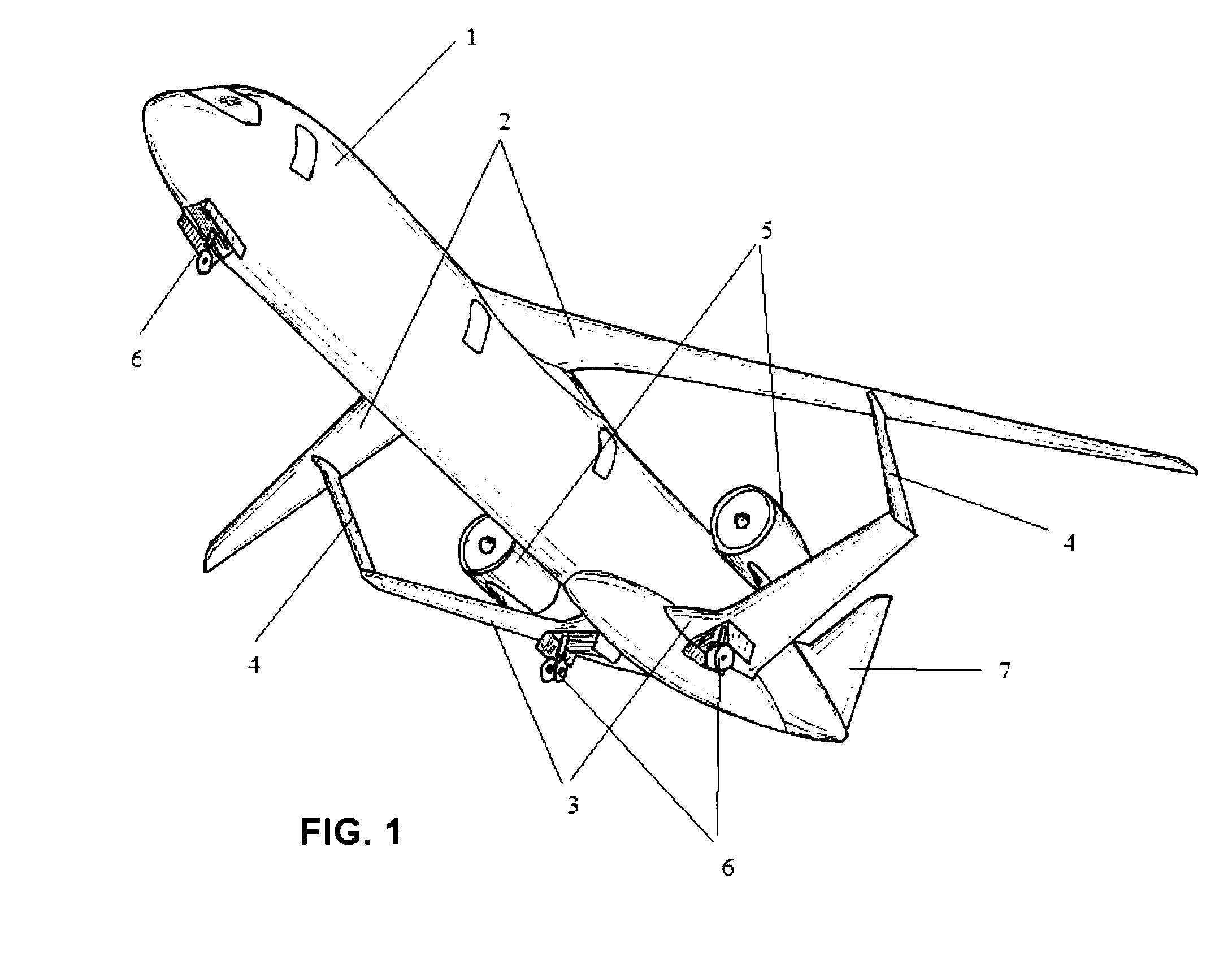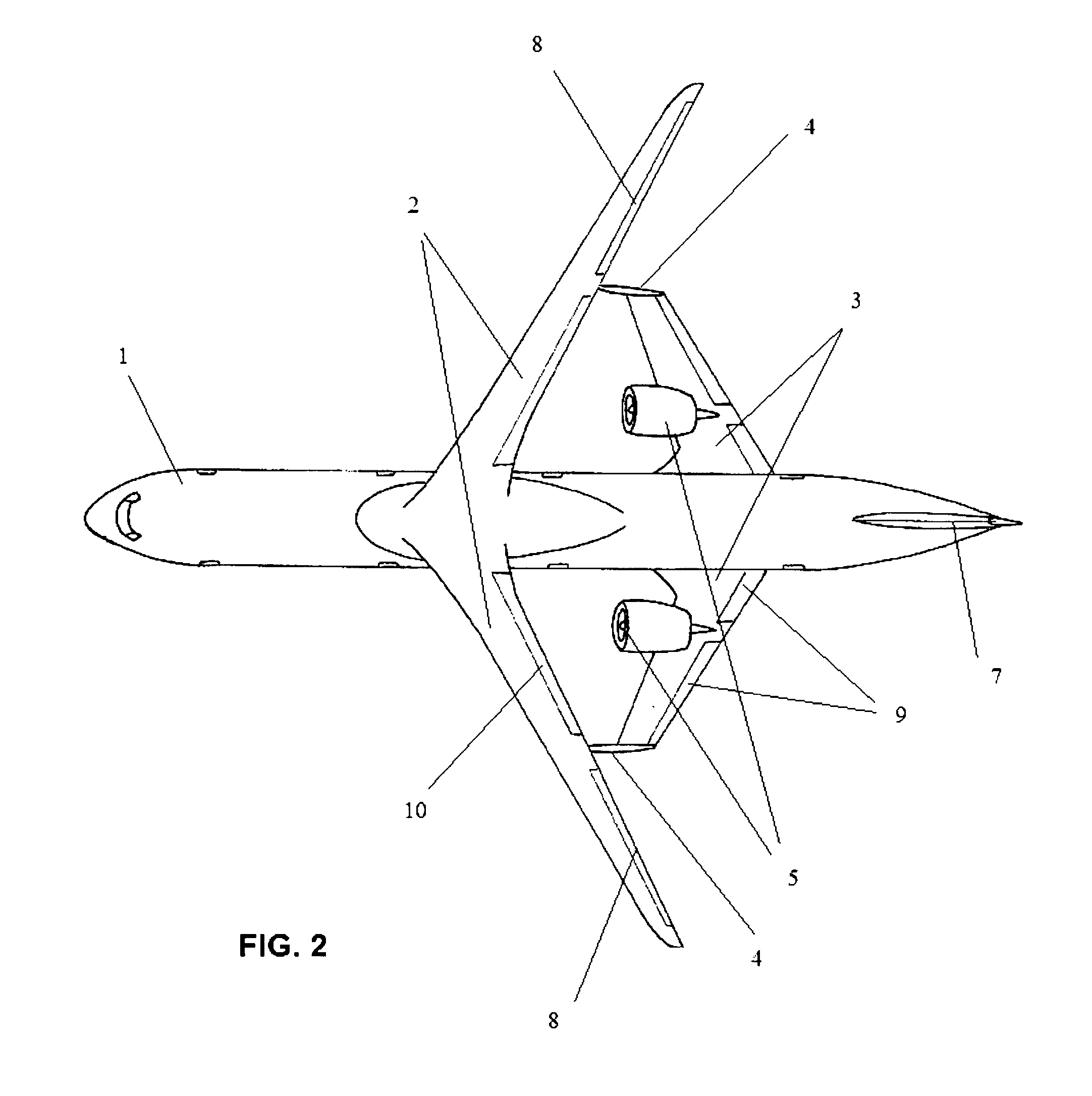Aircraft having a lambda-box wing configuration
a technology of lambda box and wing arrangement, which is applied in the direction of fuselage, airflow influencer, transportation and packaging, etc., can solve the problems of reducing the effectiveness of the wing to generate lift, increasing the structural wing and aircraft weight, and reducing the effect of compressible drag
- Summary
- Abstract
- Description
- Claims
- Application Information
AI Technical Summary
Benefits of technology
Problems solved by technology
Method used
Image
Examples
Embodiment Construction
[0034]According to a first aspect, the invention relates to an aircraft comprising: a fuselage 1; a first pair of swept-back airfoils 2, connected to the top forward portion of the fuselage 1; a second pair of swept-forward airfoils 3, connected to the lower rear portion of the fuselage 1; a third pair of substantially vertical airfoils 4, connecting the outermost tip of the swept-forward airfoils 3 to an intermediate point of the span of the swept-back pair of airfoils 2; a propulsion system 5 connected to the pair of swept-forward airfoils 3; a landing gear system 6; at least one substantially vertical airfoil 7 connected to the aft portion of the fuselage 1, which provides directional stability and control to the aircraft.
[0035]The tips of the swept-forward airfoils 3 are connected to the lower side of the swept-back airfoils 2 at an intermediate point of the span of the said swept-back airfoils 2, by means of substantially vertical airfoils 4, acting as an structural joint of th...
PUM
 Login to View More
Login to View More Abstract
Description
Claims
Application Information
 Login to View More
Login to View More - R&D
- Intellectual Property
- Life Sciences
- Materials
- Tech Scout
- Unparalleled Data Quality
- Higher Quality Content
- 60% Fewer Hallucinations
Browse by: Latest US Patents, China's latest patents, Technical Efficacy Thesaurus, Application Domain, Technology Topic, Popular Technical Reports.
© 2025 PatSnap. All rights reserved.Legal|Privacy policy|Modern Slavery Act Transparency Statement|Sitemap|About US| Contact US: help@patsnap.com



